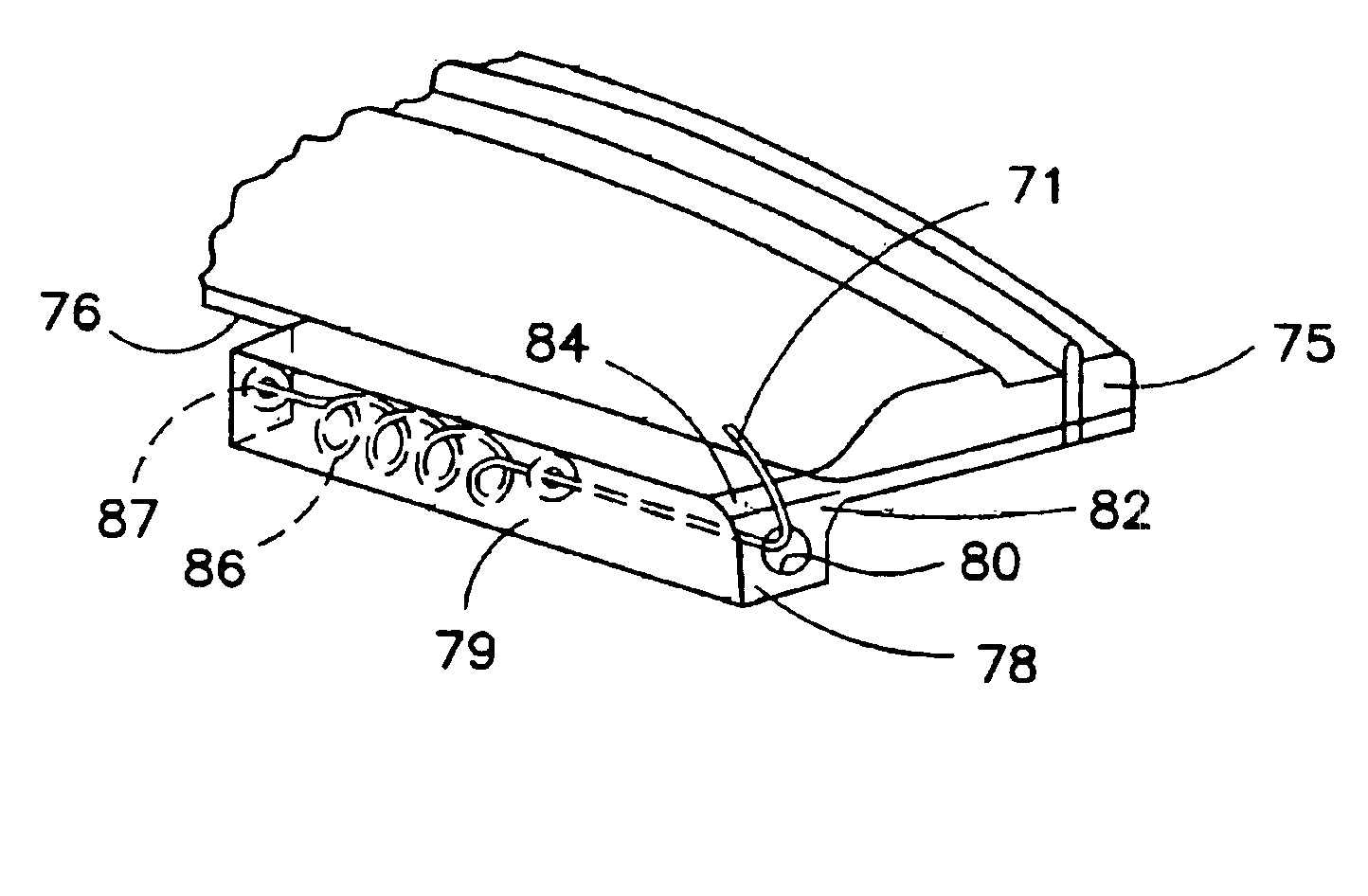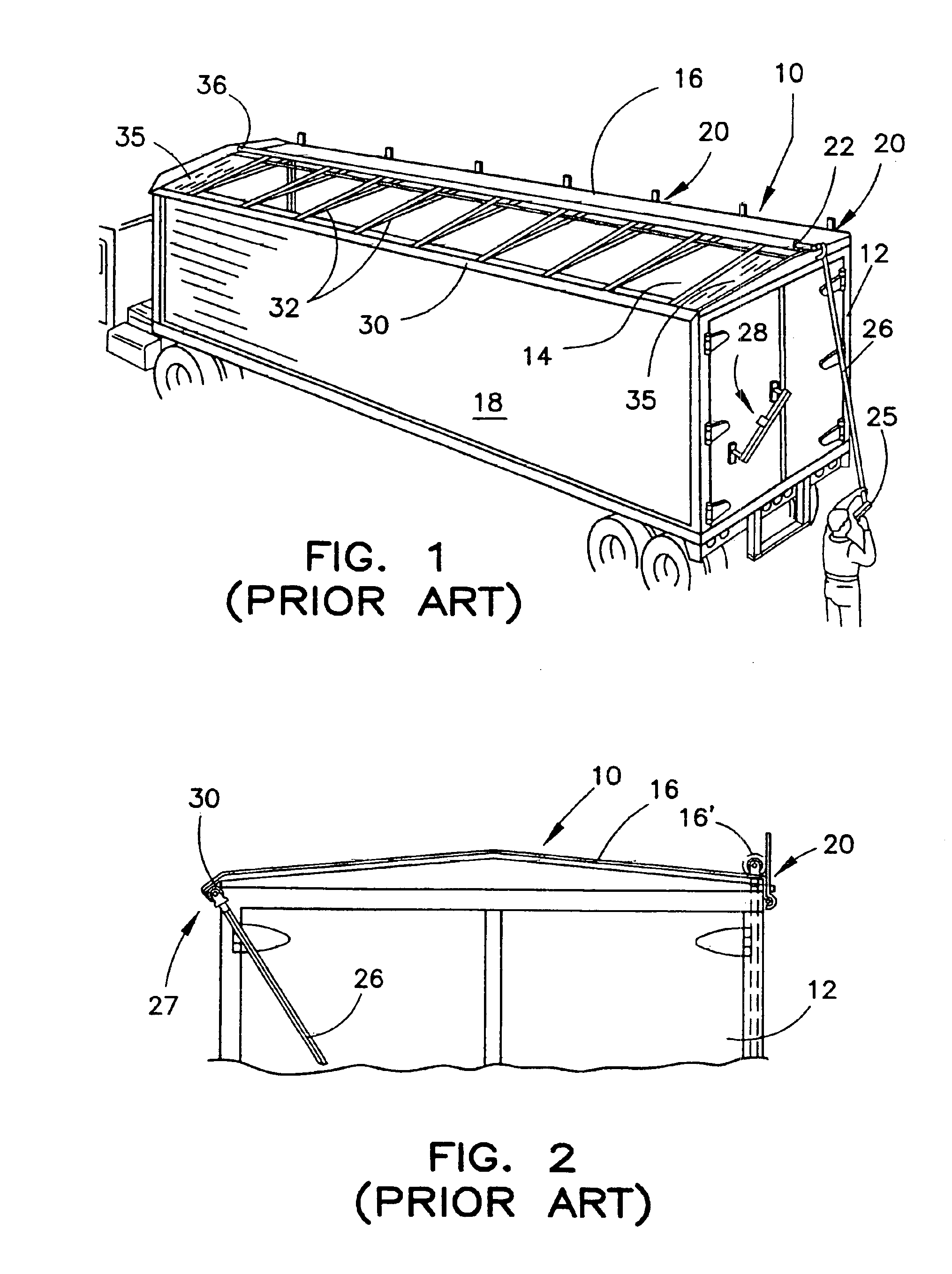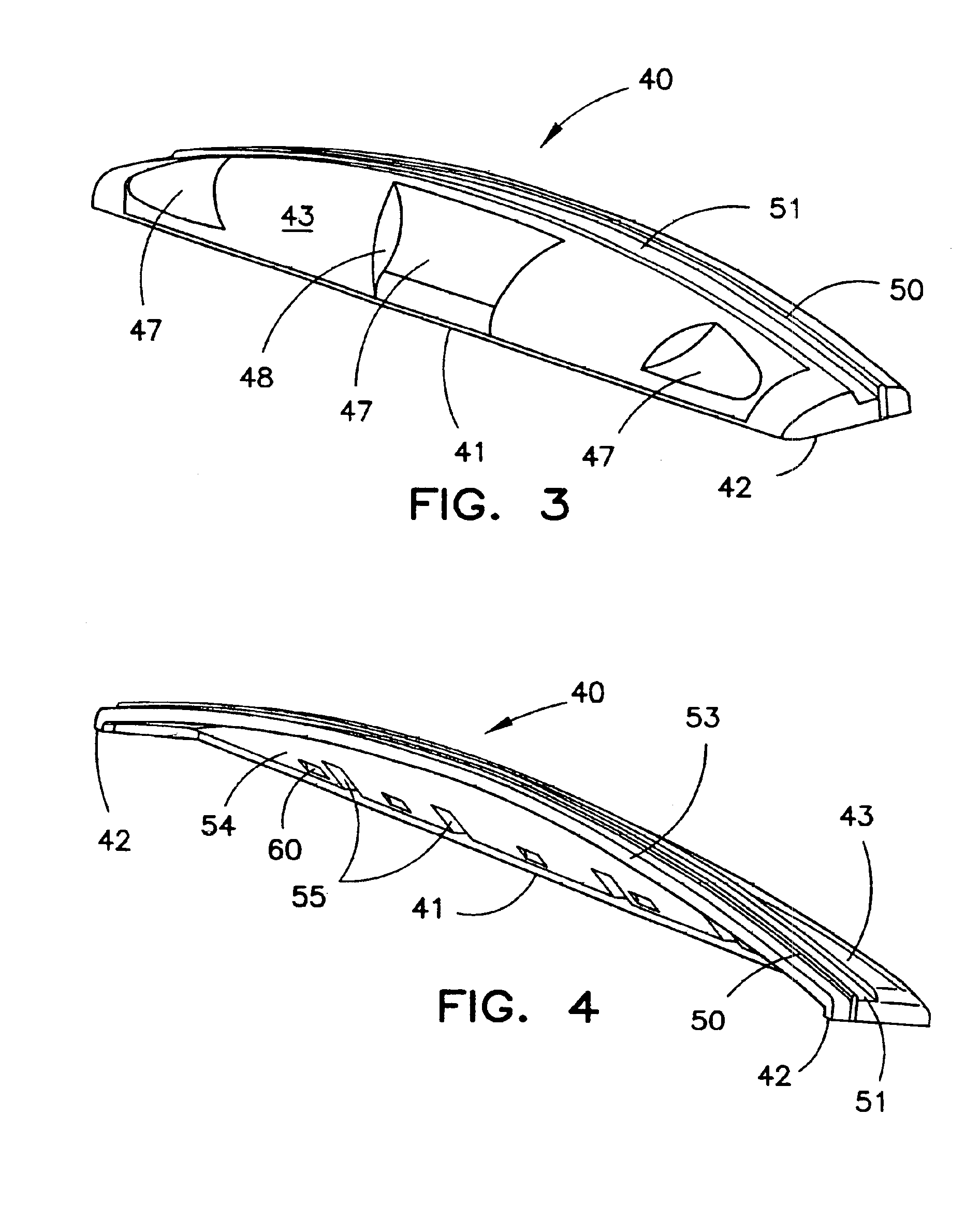End cap for roll tarp system
a roll tarp system and end cap technology, applied in the field of roll tarp systems, can solve the problems of tarping systems, difficult to form contoured end caps, and a tendency to collect transported materials under the plates, so as to reduce material requirements and component weight, easy to form, and add strength and resistance to bending
- Summary
- Abstract
- Description
- Claims
- Application Information
AI Technical Summary
Benefits of technology
Problems solved by technology
Method used
Image
Examples
Embodiment Construction
[0027]For the purposes of promoting an understanding of the principles of the invention, reference will now be made to the embodiment illustrated in the drawings and specific language will be used to describe the same. It will nevertheless be understood that no limitation of the scope of the invention is thereby intended. The invention includes any alterations and further modifications in the illustrated tools and further applications of the principles of the invention, which would normally occur to one skilled in the art to which the invention relates.
[0028]In accordance with the present invention, a novel end cap is provided for use with a roll tarping system, such as the system 10 illustrated in FIGS. 1 and 2. In particular, the inventive end cap can replace the end cap plates 35 depicted in FIG. 1. Thus, as shown in FIG. 3, an end cap 40 is provided that is of one-piece construction. Preferably, the end cap 40 is molded from a strong, durable plastic or fiberglass material that ...
PUM
 Login to View More
Login to View More Abstract
Description
Claims
Application Information
 Login to View More
Login to View More - R&D
- Intellectual Property
- Life Sciences
- Materials
- Tech Scout
- Unparalleled Data Quality
- Higher Quality Content
- 60% Fewer Hallucinations
Browse by: Latest US Patents, China's latest patents, Technical Efficacy Thesaurus, Application Domain, Technology Topic, Popular Technical Reports.
© 2025 PatSnap. All rights reserved.Legal|Privacy policy|Modern Slavery Act Transparency Statement|Sitemap|About US| Contact US: help@patsnap.com



